Experiencing Diversity and Regeneration at New Forest.
Hella welcomed us at the gate, on the spot where she and her partner Joep stood 15 years ago, looking at bare paddocks, seeing the potential and following their intuition. We walked through the rosehip plantation and along the 12 year old coppiced gum trees in the shelter belt to the old scout hall which was the one original building already there when Hella and Jeop arrived. It is a perfect place for this type of community gathering.
The fire was crackling when we entered and we were offered a warming cuppa of either rosehip or nettle tea, freshly brewed and of course collected from her garden. There were 20 of us.
A diverse group introduced each other, coming from many geographical directions with a wide spectrum of interests, skills and experience. Hella gave an overview of her story since they arrived, and I reflected the permaculture approach; design process and the embedded ethics and principles. We then went outside to experience the gardens and observe where we could find the permaculture approach applied in practice.
First Hella introduced us to her daily practice of dropping into stillness.. We each choose a spot in the garden to sit in silence for a few minutes and let the garden speak to us and observe what we notice.
Then we got into action! Turning the compost heap and shelling the pinto beans, and preparing a bed for cover crop. It was the means to notice, ask questions and get into conversation, also about each other's own situations.
Time passed quickly and we gathered back in the hall for a beautiful home made wholesome lunch of soup from garden produce, fermented vegetables from the garden and homemade sourdough bread with pesto and rosehip spreads. It was scrumptiously delicious.
Back in the circle, we compared notes on what we saw and how the permaculture principles were reflected. Hella then spoke about comfrey, the plant that helps her and her garden the most: She uses it as compost tea for enhancing soil microbes and as an ingredient for a healing poultice (made from pulverised fresh leaves) or an infused oil made from the roots for muscle ache and injuries. It’s been around as a healing herb for hundreds of years and used to be called knit bone (‘Beinwell’ in German, referring to legs). However, comfrey should never be taken internally as it is toxic for the liver.
Yulia then spoke to us about horseradish, through the lens of her Russian culture. We heard wonderful stories, how it is an immune booster, how it was fermented and applied, including using vodka! And onward we went, to the next learning in the kitchen where we witnessed Hella’s sauerkraut production set up, large traditional earthenware pots, an incubator and commercial slicer.
The facilitated part of the day ended with a delicious homemade apple and blackberry cake. On the way out we went to the swapping table where many sods of nettle roots, rosehip root suckers, dug up comfrey seedlings were swapped for other goodies. Most participants went on to the extra option of a walk to the Forest School, set up in the Kahikatea Forest; a ten minutes walk from the house. And some even ventured further to the top of the hill where you can really witness the revegetation that naturally happens once you have fenced off grazing animals. Nature is so resilient and bounces back if we only let it!
Together we witnessed rich, healthy and balanced diversity. Such a hopeful example with so much care for the planet and people and incredibly generous sharing of abundance.
Thank you Hella and Joep!
Doris Zuur
Shelling pinto beans together, 3kg harvested this year
Yearly harvest of pinto beans in the shell
Entrance to the Forest School
One of the sit-spots in the garden, for listenting to the bees and the birds and the rustling of the leaves
The compost heap post-turning
The compost heap being turned and airated, this helps it become less acidic
Sharing clumps of European Nettle - part of the swapping table
Rosehips (Rosa Rucosa) ready for harvest, one of 200 planted on the property, one rosehip has the vitiman C of three oranges
The last crabapples in the orchard
Johannes in the flowerbed
Hella showing the semi-commercial fermenting setup
Hellas homemade bread and watercress pesto
Bread with rosehip honey
Autumn harvest
All Photos courtesy of Beka Whale
- Log in to post comments
